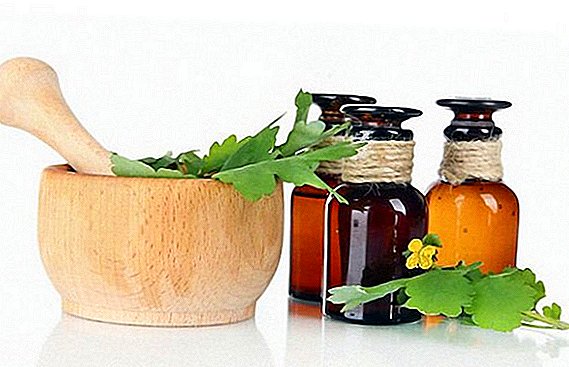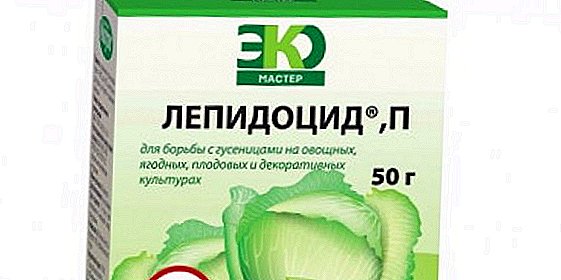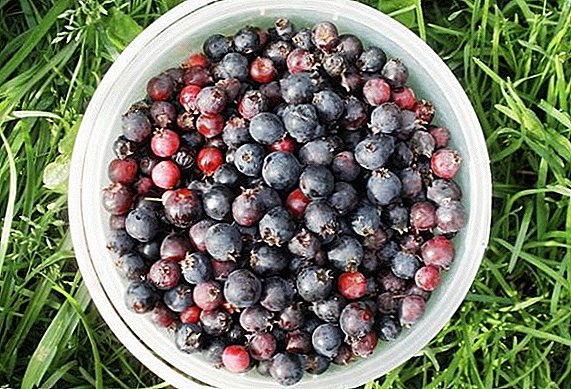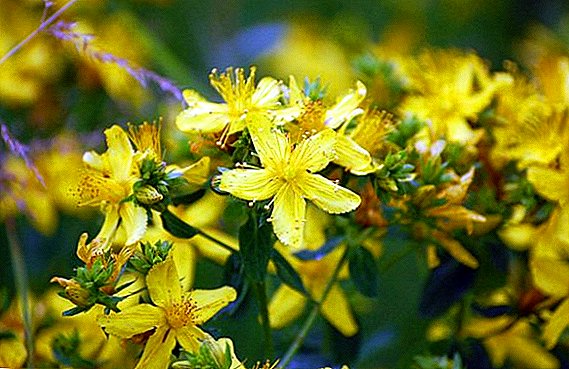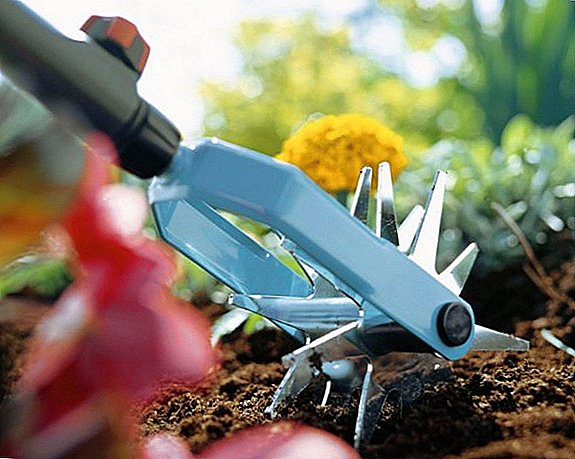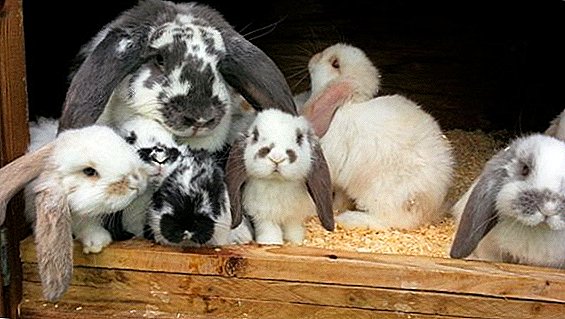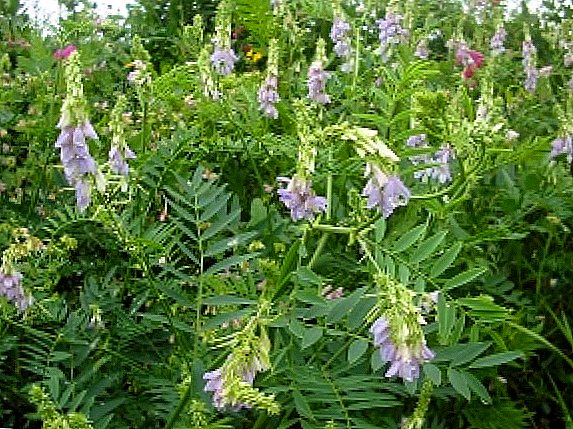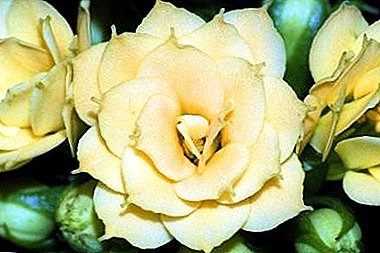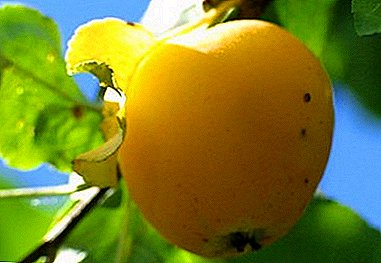
Chinese golden characterized by low consumer qualities.
However, these are the best apples for making jams, baby food and juices, and therefore the variety is widely used in production.
In the garden, such an apple tree often plays the role decorative tree.
What kind is it?
 The summer varieties include apple varieties: Melba, Gorno-Altaisk, Gornist, Malinovka, Apple Spas, Yandykovskoe, Hero of the Day, Wonderful, Terentyevka, Silver Hoof, Solntsedar, Glory to the winner, Korobovka.
The summer varieties include apple varieties: Melba, Gorno-Altaisk, Gornist, Malinovka, Apple Spas, Yandykovskoe, Hero of the Day, Wonderful, Terentyevka, Silver Hoof, Solntsedar, Glory to the winner, Korobovka.
Pollination
Occurs due to pollen of apple flowers of a self-fertile variety, as apple trees belong to self-infertile type. Ideally, plant lanes of two varieties at a distance of five meters from one another.
Varieties of pollinators: Grushovka Moscow, White Bulk and Papirovka.
Description of the Chinese variety Golden
The appearance of apple trees is characterized by medium height, thick light green crown and yellow, small fruits.
Tree medium thick with a beautiful weeping crown shape. The branches are orange-yellow in color. The crown is rather sprawling and lowered.
The shoots are greenish yellow, thin and straight. The leaf is a light green color. It has an elongated shape with serrations on the edges.
Stalks are refined and long. Chinese Chinese apple trees are often used for decorative purposes.
 Very small (average fruit weight is 40 grams) beautiful smooth yellow-amber shade, but with low consumer qualities.
Very small (average fruit weight is 40 grams) beautiful smooth yellow-amber shade, but with low consumer qualities.
The flesh of the apple is cream-colored with a yellowish tinge, grainy consistency.
Apples are sweet to taste with a slightly sour taste.
A photo




Breeding history
The early summer cultivar of an apple tree I.V. Michurin. Produced by breeding Filling white and Chinese.
Natural growth region
Natural areas for Chinese’s golden apple tree are North-West and Volga-Vyatka region of Russia.
However, the variety is well adapted. in other sunny regions.
Apple varieties are suitable for planting in these regions: Pepin Saffron and New Cinnamon, Young Naturalist, Solntsedara Sunlight.
If the climatic conditions are not suitable enough. It is important to ensure proper care, and above all, planting a tree (see below).
Yield
 Fruiting apple tree Chinese is coming for the third year after landing.
Fruiting apple tree Chinese is coming for the third year after landing.
Maturation fruit occurs at the end of July (approximately 25 numbers).
The average yield of a tree - 100 kilograms.
Within a week after harvest, apple fruit should be used.
Apple tree very much frayed in the period of ripening.
Planting and care
From care directly depends on the yield of apple. Kitayka Golden Apple Tree unpretentious care. When planting a tree using classic fertilizer.
Landing Chinese golden desirable in the autumn period (end of September - beginning of October).
Then you need to choose a place for landing, it should be:
- on a sunny territory;
- away from groundwater (you should pay attention to this item, since China does not survive if this condition is not observed);
- with fertile soil;
- well drained areas with a pH of 5.5-6.5.
 When choosing a seedling, it is important to consider the following:
When choosing a seedling, it is important to consider the following:
It is necessary to choose seedlings with a developed root system and purchase them in a zone with the same climatic conditions;
It is better to choose a sapling young, then it quickly adapts to the soil in the area where it is grown.
Plants with exposed roots should be placed in water for an hour before planting.
Next, you need to prepare landing pits. Best to do it one month before landing.
The optimal parameters of the pit for planting an ornamental apple: 1x1x0.7m
The upper layer of the excavated earth is mixed with the lower layer and the following fertilizers are introduced:
| amount | Fertilizer |
|---|---|
| 18-20 kg | Horse manure |
| 250 g | Wood ash |
| 250 g | Superphosphate |
| 100 g | Potassium Sulphate |
The pit is filled with a mixture of earth with fertilizer for 2/3. From above they pour fertile soil without fertilizers. Pit watered and again fill the layer of fertile soil.
 The next year after landing, in the spring, it is important to form a foliage crown apple trees. It is necessary to trim the ends of each branch.
The next year after landing, in the spring, it is important to form a foliage crown apple trees. It is necessary to trim the ends of each branch.
The first two years it is important that the apple tree was tied to a wooden peg (it is better to use a linden or hazel tree).
Desirable for the first four or five years, do not let the apple tree produce fruit (it is necessary to pick 80-100% of flowers).
In the first year in April, it is necessary to irrigate trees with mixtures that protect against pests.
This procedure should be performed twice:
- when buds began to swell on branches;
- before blooming buds.
Further, the apple tree does not need any special fertilizer.
Basic care during the first five years after planting:
- tying trees to protect against rodents and hares (material - parchment, lapnik);
- mulching with humus pristvolnyh circles;
- hilling ground to a height of twenty centimeters.
Diseases and pests
Most often, the Chinese tree is golden subject to the following diseases:
- scab;
- powdery mildew;
- tinder
 The golden apple tree is characterized by weak scab resistance.
The golden apple tree is characterized by weak scab resistance.
A feature of this disease is that first of all it affects the leaves of the tree, and then moves to the fruit.
The trunk remains completely healthy.
The cause of this fungus is most often air stagnation inside the crown tree or high humidity
First signs scab are the appearance of green-brown spots on the leaves, also in a large number of small brown, forming a crust, spots on the fruit.
To avoid scab damage, it is important to isolate the apple tree from other crops in the garden, carefully monitor the plant and constantly disinfect and fertilize the soil.
Prevention of scab: the introduction of ash into the soil, the formation of the crown, feeding with potash fertilizers, fertilizing with compost.
Quite often in practice there are cases when the Chinese Golden Apple tree is exposed to powdery mildew.
Mealy dew - this is a fungal disease. A characteristic sign of the disease is the appearance of the mycelium fungus in the form of white bloom on the leaves of trees.
Most often the disease manifests itself after heavy rains. Infection occurs on the tree from the bottom up, until it completely attacks the tree.
 The best way to fight this disease is to prevent it, which consists of:
The best way to fight this disease is to prevent it, which consists of:
- pollination of colloidal sulfur and copper compounds;
- the use of varieties with high resistance to the disease;
- destruction of the affected elements;
- fertilization of potash and phosphorus type.
Tinder mushroom strongly affects the trunk of an apple tree, but it affects the fruit indirectly.
It is necessary to eliminate such fungus immediately.
Daily stay of the fungus on the bark pulls a lot of strength and nutrients that are needed for apple normal existence. If you do not, the process of destruction can be considered irretrievable.
If the mushroom has not yet become too hard, you can use ordinary garden knifeto cut it off. If the fungus struck the tree badly, it became very big and rather hard, have to use an ax.
Healthy wood will naturally suffer.
It is important to destroy the fungus at its very roots. Otherwise, after some time, the mushroom “settles” again in the same place.
 After removing the infection, the place where she grew up needs sanitized.
After removing the infection, the place where she grew up needs sanitized.
The main thing is that the cut is even, most often it takes place to make a couple of more cuts.
Processing should be carried out copper sulphate, after which it is desirable to paint over the treated place oil paint.
If this is not done, the wound will soon become a nest for various types of pests.
Fruits of apple tree Kitaiki gold are indispensable in the manufacture of various jams, preserves, juices, compotes and various baby food. Apples possess sweet honey taste. Apple trees are very elegant and are often used in the garden. as a decorative tree.


